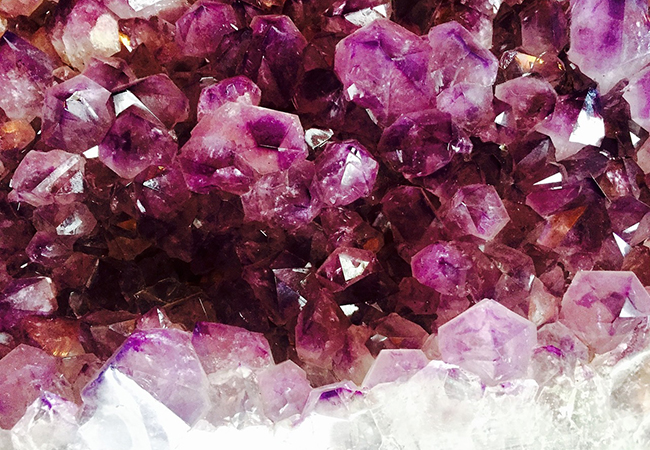
Introduction
The collection of the “Emilio Galán” Geology Museum of the University of Seville (US) dates back to 1850. Today it gathers more than 5000 specimens belonging to the fields of mineralogy, petrology and paleontology. Some 1700 minerals, 17 meteorites, 500 rocks and 3000 fossils have been catalogued.
There is also a large collection of thin plates and polished specimens of the mineralizations of the Pyritic Belt, petrographic microscopes, magnifying glasses, goniometers, various scientific instruments, as well as books, geological sections, and inventories from the 19th and 20th centuries, which are currently kept in the Old Collection of the US Library.
A large part of this collection is on display in the General and Riotinto exhibitions, located on the first and second floors, respectively, of the CITIUS building (Center for Research, Technology and Science of the University of Seville). Another part, temporarily ceded by agreement to the CSIC, is on display in the Casa de la Ciencia (GeoSevilla exhibition).
The Museum is responsible for the conservation of this heritage, as well as for holding exhibitions, seminars and activities. Its main objectives are to transmit and disseminate geological knowledge, facilitate public understanding of geology and help create scientific vocations.
History
The University of Seville’s Geology collection has its origins in the Natural History Cabinet, founded in 1850 by Professor of Mineralogy and Zoology Antonio Machado y Núñez (1815-1896). The Cabinet was composed of the pieces that would later make up the individualized collections of zoology, medicine, mineralogy, paleontology, prehistory and the herbarium. The first location of the Cabinet was a gallery on the second floor of the former Faculty of Sciences of the University of Seville (today the headquarters of the Faculty of Fine Arts, on Laraña Street). After more than 100 years, in 1957, the Geology collection was moved to the building of the former Tobacco Factory, and in 1998 to the Reina Mercedes Campus.
A large part of the mineralogical collection is due to Machado y Núñez, who incorporated specimens from abroad, by purchase or exchange, and specimens collected during excursions. In 1884, the geologist Salvador Calderón y Arana succeeded Machado in the chair and continued with the expansion of the collections thanks to the numerous excursions that Calderón made with disciples of the Cabinet and the Seville Section of the Spanish Society of Natural History. At the end of the 19th century, the Cabinet was considered a Museum of Natural History, being one of the main museums in Europe and, in the words of the geologist Eduardo Hernández Pacheco, the second most important in Spain.
Between 1913 and 1919, under Francisco de las Barras de Aragón, numerous specimens were added and some collections were reorganized. The reorganization of the regional mineralogical collection of Andalusia was carried out by Pedro Castro Barea who, between 1922 and 1936, took over the Museum of Natural History with dedication. He enriched the collections and created a collection of Ores de Riotinto, which was one of the first metalogenetic studies carried out in the Peninsula. In 1932 the Museum obtained a curatorial position.
In 1957, the Geology collection was moved to the new Faculty of Sciences, on the second floor of the Old Tobacco Factory Building. This meant the dismemberment of the Natural History Museum of the University, and the destruction of a large part of it. With Ramón Coy i Yll, Professor of Crystallography, Mineralogy and Mineralotechnics, in 1978 the collection of the Museum of Geology was moved to the second floor of the Old Tobacco Factory, and a curatorial position was created (occupied between 1978 and 1995 by Encarnación Carmona Aguilar).
When Emilio Galán Huertos was Professor of Crystallography and Mineralogy of the Chemistry Department of the University of Seville, a reorganization was carried out that led to the publication, in 1993, of the “Guide to the Geology Museum of the University of Seville. Didactic experiences for a visit”.
In 1994, the University transferred the collections of the Museum of Geology to the new Centro Andaluz de Exposiciones Didácticas de Ciencias Naturales, Naturaland, installed in the former Aragon Pavilion of the Expo’92. When it was closed in 1995, its collections were put back into storage. After several unsuccessful moves and due to the risk of deterioration of the collection, in February 1998 it was decided to move it to the Reina Mercedes Campus, deposited in the old laboratories in the basement of what is now the School of Computer Engineering, where the collection was stored until 2011.
In 2002, the Updated Inventory of the Geology Museum of the University of Seville was published and, subsequently, several exhibitions were held. After the creation of the “Asociación Antonio Machado y Núñez de Amigos del Museo de Geología de la Universidad de Sevilla”, in 2008 and under the initiative of Miguel Ángel Castro Arroyo as Director of the General Research Services of the University of Seville (SGI US), and later with Manuel García León (Vice Rector of Research) and Emilio Galán Huertos, in April 2011 the Museum of Geology presents a General Exhibition at the CITIUS. In 2014, some two hundred pieces of minerals, fossils and rocks are ceded to the CSIC for display in the permanent exhibition GeoSevilla, at the Casa de la Ciencia. In 2016, a thematic exhibition on Riotinto mining is inaugurated on the 2nd floor of the CITIUS building. Currently, the Museum of Geology conducts guided tours in the CITIUS exhibitions, as well as workshops aimed, especially, at secondary and high school students.
Further Information
Location
Geology Museum. Av. Reina Mercedes 4B – 41012 Sevilla
Opening hours
Geology Museum. Thursday 9:00 – 14:00.Appointment needed.
Webpage
http://direccioncitius.us.es/museo
Director
Antonio J. Romero Baena
Technical team
Olivia Lozano Soria
